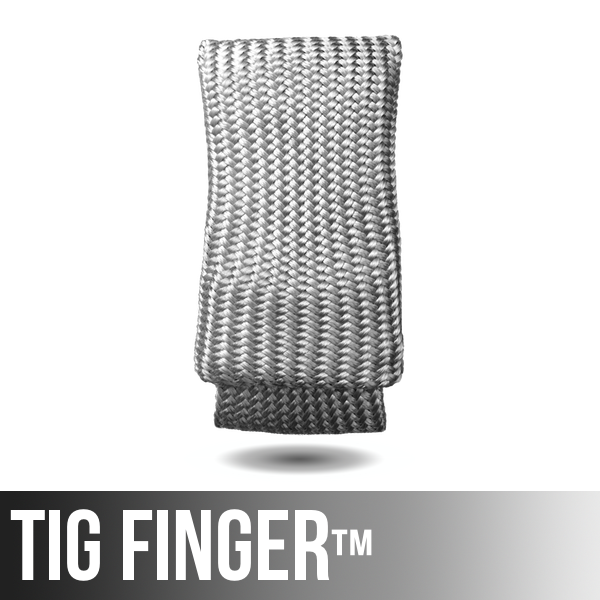Video Transcript
Short Circuit MIG Welding Techniques
I’m practicing on my MIG welding technique, and in doing that, I’m trying to come up with a technique that gives a really good look, as well as gets good penetration. And I filmed some of it, and I cut and etched and polished and looked at it. And so I’m inviting you along for the ride. This is similar to some of the previous videos I’ve done. Hopefully, there’ll be some new things in here, and it’ll be interesting and entertaining.
This is not a sponsored video, and if you want to know what I mean by that, if your curiosity’s up when I say that, just wait until the end, and I’ll kind of explain. This is not the time and place for it right now. So let’s get into the welding.
Now, I’m getting ready to tack a whole bunch of T-joints up, and I am working on a how to TIG weld aluminum series. So while I’ve got the TIG torch set up, I’m going to use it to tack weld with. And what I like to do for tack welding sometimes is to put the tip way up in there like that, crank the amperage up to maybe one and a half to two times what I would weld that … in this case, 175 amps. Prop the TIG cup, press the trigger, and zap. And it’s just that quick.
And it’s pretty much foolproof, because the tip of the electrode can’t really get crapped up, because it’s kind of almost below flush. And it just puts a really quick … almost like a laser zap on the end there. So once I get all these tacked up, I will switch over to the MIG machine. It just made sense, for some reason, for me to do it this way.
Now, it’s, to start off, going to be 19 volts, 330 inches a minute with .030 diameter wire. That’s .8 millimeters diameter wire. And I’m going to start off with a little bit of a push angle, using just a little bit of gun manipulation. This is kind of like … I don’t know, I’m just in the habit of doing this, especially when I’m using the .030 wire and short circuit MIG. I’m just in the habit of doing a little bit of oscillation like this, a little series of loops. And I may have to get out of that habit, to be honest with you, but old habits are kind of hard to break.
They say that you’re supposed to set the machine to where it sounds like bacon frying. Probably a pretty good idea. All right. That’s the finished joint there. You can see a little bit of spatter there. That’s typical when you push, unless you turn the wire feed speed up quite a bit higher. There’s always lots of discussion on pushing versus pulling, and I think that really comes from … because there are so many different modes of transfer. There’s spray transfer, short circuit transfer, et cetera.
With short circuit transfer, I prefer to pull, but I push, also. It just depends on the situation. I’ve done these kind of tests before. I generally get a little bit better penetration pulling, a little less spatter pulling, but not much difference. It’s not like night and day. There are subtle differences in the bead profile and penetration, but we’re going to test and show what each one does.
All right. That’s a series of sort of like Us or cursive Es, and which one you use will determine how much buildup you have in your weld. And it also affects your travel speed. Like, if I’m looping back into the weld like this, that’s going to build up a little bit more, and that’s going to slow down travel speed, whereas if I don’t loop back into the weld at all and I just keep moving forward, that speeds up travel speed and usually spreads the ripples out and doesn’t build up as much.
All right. Just for kicks, because the machine I was working on also is stick welded, I decided to throw a 3/32nd 7018 in. The funny thing … that probably sounds more like bacon than any of the MIG welds, right? But I just wanted to … since I’m going to slice and dice these things and check for penetration, I kind of wanted to see how the stick weld fared, and how it compared to short circuit MIG.
Now, I ground some teeth in this cheap, half-round file, and that’s kind of a handy tool to have when you’re stick welding for scraping slag off. Works especially well on pipe. So now, it’s time to cut all these and kind of see where I’m at. Get a little polish on them. Put a little acid etch. Let me remind you here of what the puddle looked like on the pull. And then, we’ll put a little acid on there and see what we got.
The one on the right slightly better than the one on the left, but both of those were pulling. Now, here comes the push. We give it a quick acid etch, and you can see the penetration on that bottom plate is a little bit less than it was with the pull. Here they are side to side. Again, not like night and day. The differences are subtle. It could’ve been me. I could’ve had my gun angled a little off. I don’t know, but that’s a consistent result I get when I do push versus pull test.
All right. Since I threw that 7018 3/32 rod in there and did a little single pass weld on that, let’s take a look at what that cross section looks like. The one on the left definitely has got a little undercut, but I am surprised at how little it penetrated the bottom plate. All right. Quickly, a little outside corner joint. You don’t really have much room to do much manipulation of the gun here, so oftentimes, something like this, you might just do a straight drag, a straight push, or a little stitch back and forth type motion, forward and back. Or forward and pause, I should say.
I am not really very good at this. I need some practice on this particular joint here. I think there’s a way to set the machine with high inductance and kind of low wire feed speed to let the bead kind of fan out, but I’m still working on that.
Now, let me show you some clips for some previous videos here. This is some .035 wire, overhead, higher settings. 20 volts, 300 inches a minute with .035 wire. You need to set the machine good and hot for overhead, which might be counterintuitive to what some people think. You set it nearly as hot as you would just welding flat or horizontal.
All right. Here’s a joint, a vertical uphill with the .035 wire. Here’s a technique I like to use, a little series of overlapping triangles, sort of. And that’s just one method. There are several, but that works for me, and it keeps the arc in the front of the puddle and keeps it tracing the front of the puddle and keeps the bead kind of … keeps it from crowning up too much.
Here’s why I say this is not a sponsored video. In the last video that I did, the Brother Moto video, I showed the Lincoln Power MIG 210 MP. I showed a Swag Off-Road porta-band stand in a Milwaukee porta-band, a Metabo 6 inch grinder and grinding wheels, a silver marking pencil, a Bosch laser level. And I think the impression is, at least due to some of the comments that I got, that I’m getting paid by these people.
And I’m just not, and so I want to make that clear. I want to make that crystal clear. If I am sponsored by, you will see the little thing pop up. This is a sponsored video. I have an online store that pays my bills. It’s weldmonger.com, and I’ll be adding more and more products there. And it’s doing okay, and I’m not worried about YouTube earnings or sponsorships or any of that crap. So thank you for letting me get that off my chest, and we’ll see you next time.







April 23, 2017 at 9:18 AM
I for one HOPE that you are; sponsored, getting YouTube kickbacks, receiving free tools/gear, doing well in your store, and just doing well in general.
You have been in the “how to video” game for quite some time now. I know because I have gone back and watched most of those old videos. I know that you have spent thousands of hours and untold amounts of money to produce the videos, instructional narratives, podcasts, APPS, …..etc. Almost EVERY SINGLE ONE OF THOSE VIDOES AND NARRATIVES is full of information that will help somebody (or thousands of somebodies) go out and get a job that pays $50,000 or more a year.
So in total, you have potentially helped your followers to earn hundreds of thousands (if not millions) of dollars. I certainly cannot and will not call foul on you for telling me what machine, pencil, square, torch, …etc you are using. It’s not like you are showing me some piece of junk and telling me it’s the best thing out there. Keep on keeping on BROTHER. Earn what you can. We trust you.
Chris. Texas. Journeyman pipe fitter/fabricator/welder(ish).
Oh and btw : My father used to teach Tig at a university. When I showed him some of your videos, his response was “He teaches the Bechtel procedure just like I did. He teaches tungsten stick out just like I did. He teaches lay-wire, amperage progression, positioning….just like I did.”
So how many people have you provided the opportunity at gaining a free education? The university and its staff certainly make a. buck. Why shouldn’t you?
April 19, 2017 at 5:36 PM
Jody,
It sucks that people feel like they need to make these negative comments. Like mentioned before, who cares if you are sponsored. Good for you. You are sharing with us what you have found to be a good tool which is partly why we watch. You do an amazing job with these videos. I share them all the time.
Keep doing what you are doing, you are the best!
My Regards,
Terry
April 18, 2017 at 10:57 PM
I have also learned plenty for free…Have used your store before and will again…
KEEP UP THE GREAT VIDEOS !!!!!!!
Thanks From South Texas…..
April 18, 2017 at 5:24 PM
Jody, hi my name is James and I have to say I am wounded that people are questioning you about sponsorship (who cares if you did? That’s your business and good luck to you if you did) I have learned loads and put your tips to good use for years and your Tig finger makes life so easy especially in smaĺl bore pipe you probably saved me getting 1 million blisters! I am now on the inspection side of our wonderful trade but still follow your videos religiously as your always learning in this game. I have never paid for your videos and when I was going through 3 years at college I couldn’t afford to pay anyway but I learned more from you than my tutors your tips always helped me. I hope you’re business is thriving and you have always come across as a genuine gentleman in my books.
I wish you every success,
A fan from Scotland.
James.